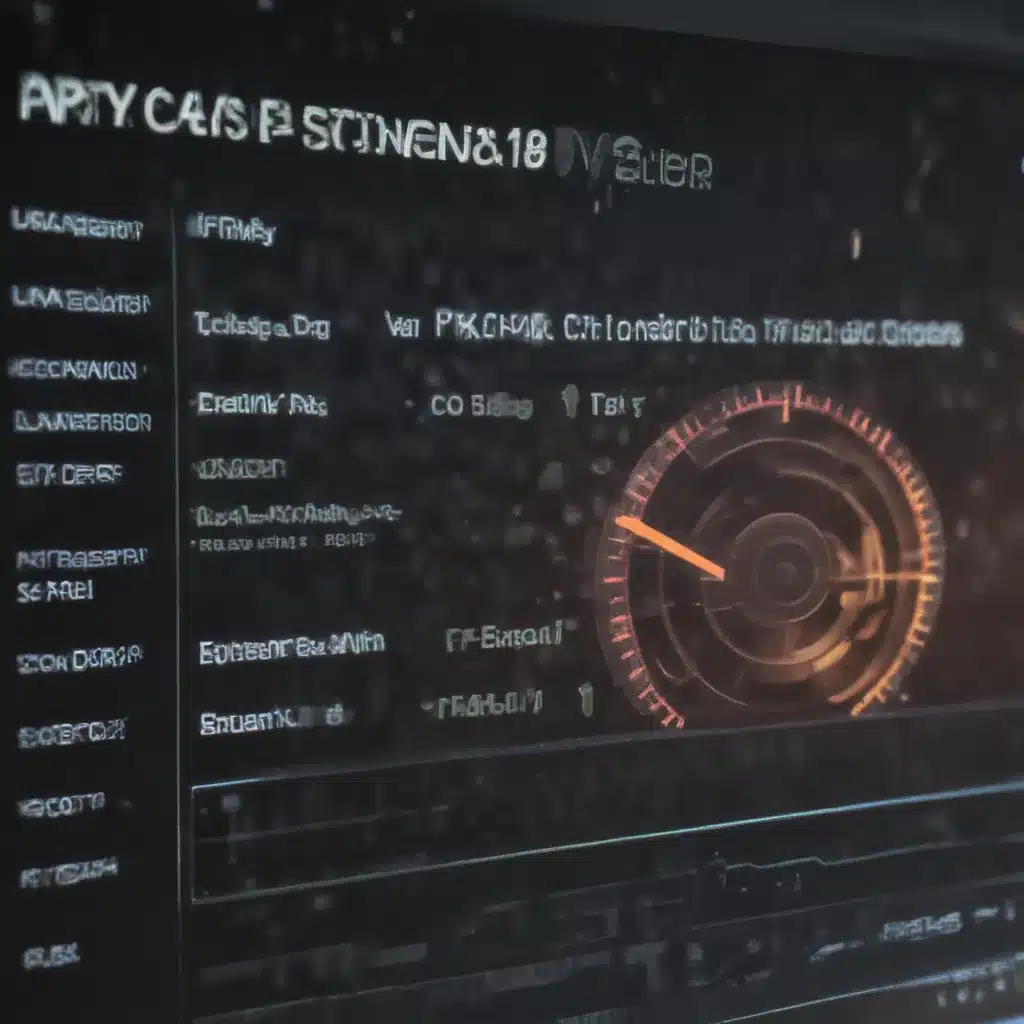Are your favorite games running at a stuttering crawl, leaving you frustrated and ready to throw your mouse across the room? Fear not, my fellow PC gaming enthusiasts! I’ve scoured the depths of Reddit, Steam, and PC optimization forums to uncover a treasure trove of tips and tricks that will have your rig running smoother than a hot knife through butter.
Diagnose the Problem
Before we dive into the performance-boosting goodness, let’s take a moment to understand what might be causing your FPS woes. As a newcomer to emulation, you’ve encountered some mixed results with a few games [1]. Tales of Xillia ran relatively well after some tweaks, while Demon’s Souls and Disgaea 4 struggled to maintain a playable framerate.
The culprit could be your hardware – a GeForce GTX 1060 3GB and an Intel Core i5-6600K are respectable, but may not be enough to handle the demands of modern emulation. Or perhaps your system is bogged down by background processes and bloatware. Whatever the reason, we’ll leave no stone unturned in our quest for silky-smooth gaming.
Optimize Your Settings
The first step in any PC performance overhaul is to dive into your in-game graphics settings and turn everything down to the bare minimum. I know, I know – sacrificing visual fidelity can be a tough pill to swallow, but trust me, it’s worth it. By lowering resolution, disabling anti-aliasing, and toning down lighting and texture quality, you’ll free up valuable resources for your GPU and CPU [2].
But wait, there’s more! Some sneaky little settings can make a big difference in your frame rates. For example, enabling GPU tessellation can shift the workload from your CPU to your graphics card, resulting in a significant boost [3]. Just be sure to test this one, as it can have mixed effects depending on your hardware.
Tweak Your System Settings
Now, let’s dive into the guts of your Windows 10 or 11 operating system. One of the most effective tricks I’ve come across is disabling the dreaded “fullscreen optimization” feature. This Windows 10 “feature” often does more harm than good, so right-clicking your game’s executable and unchecking that box can net you a substantial FPS increase [4].
While you’re at it, consider turning off the Xbox Game Bar and its associated overlays. These background processes can eat up precious system resources, so cutting them loose can give your games some much-needed breathing room [4].
And don’t forget about your mouse settings! Enabling “Override high DPI scaling” in your game’s compatibility options can provide a smoother, more responsive feel to your mouse movements, which can make all the difference in fast-paced games [4].
Clean Up Your Act
Remember that old saying, “A clean house is a happy house”? Well, the same principle applies to your PC. Over time, our beloved gaming rigs can become cluttered with unused programs, drivers, and other digital detritus, all of which can drag down performance.
Take a good, hard look at your installed applications and uninstall anything you’re not actively using. Those background processes can suck up valuable system resources, and we don’t want them interfering with our quest for gaming greatness [5].
But wait, there’s more! Unused files, temporary internet data, and other system junk can also contribute to sluggish performance. Thankfully, there are some great PC optimization tools, like AVG TuneUp, that can scour your system and get rid of all that digital grime, freeing up resources for your games [5].
Squeeze Every Last Drop of Performance
Now that we’ve covered the basics, it’s time to get a bit more technical. Did you know that adjusting your virtual memory settings can sometimes provide a noticeable FPS boost? By increasing the size of your virtual memory, you can give your system a bit more breathing room, especially if you’re running a lot of programs or have limited physical RAM [7].
And for the true performance junkies out there, diving into your game’s INI files can uncover a whole world of hidden optimization tweaks. For example, some games like Hunt: Showdown have undocumented settings that can dramatically reduce CPU bottlenecks [6]. Just be sure to back up your files before making any changes, as tinkering with these settings can sometimes have unexpected consequences.
Putting it All Together
Phew, that was a lot of information to digest! But fear not, my friends – with a little elbow grease and a healthy dose of trial and error, you’ll be well on your way to boosting your in-game FPS and enjoying your favorite titles like never before.
Remember, every system is different, so what works for me may not work for you. But by combining these various tweaks and optimizations, I’m confident you’ll be able to find the perfect balance of performance and visual fidelity to suit your needs.
So, what are you waiting for? Get out there, fire up your favorite games, and let the FPS-boosting begin!
References:
[1] https://www.reddit.com/r/rpcs3/comments/kdy4w7/suggestions_for_optimizing_rpcs3_for_performance/
[2] https://steamcommunity.com/app/251570/discussions/1/2534848731738745184/
[3] https://www.reddit.com/r/HuntShowdown/comments/cxldde/a_few_tweaks_to_boost_fps_by_1540_frames/
[4] https://www.avg.com/en/signal/9-ways-boost-gaming-rig
[5] https://www.avg.com/en/signal/9-ways-boost-gaming-rig
[6] https://stepmodifications.org/forum/topic/15019-found-a-couple-of-ini-tweaks-that-dramatically-reduce-the-cpu-bottleneck/
[7] https://www.quora.com/Is-virtual-memory-worth-tweaking-to-increase-gaming-performance













